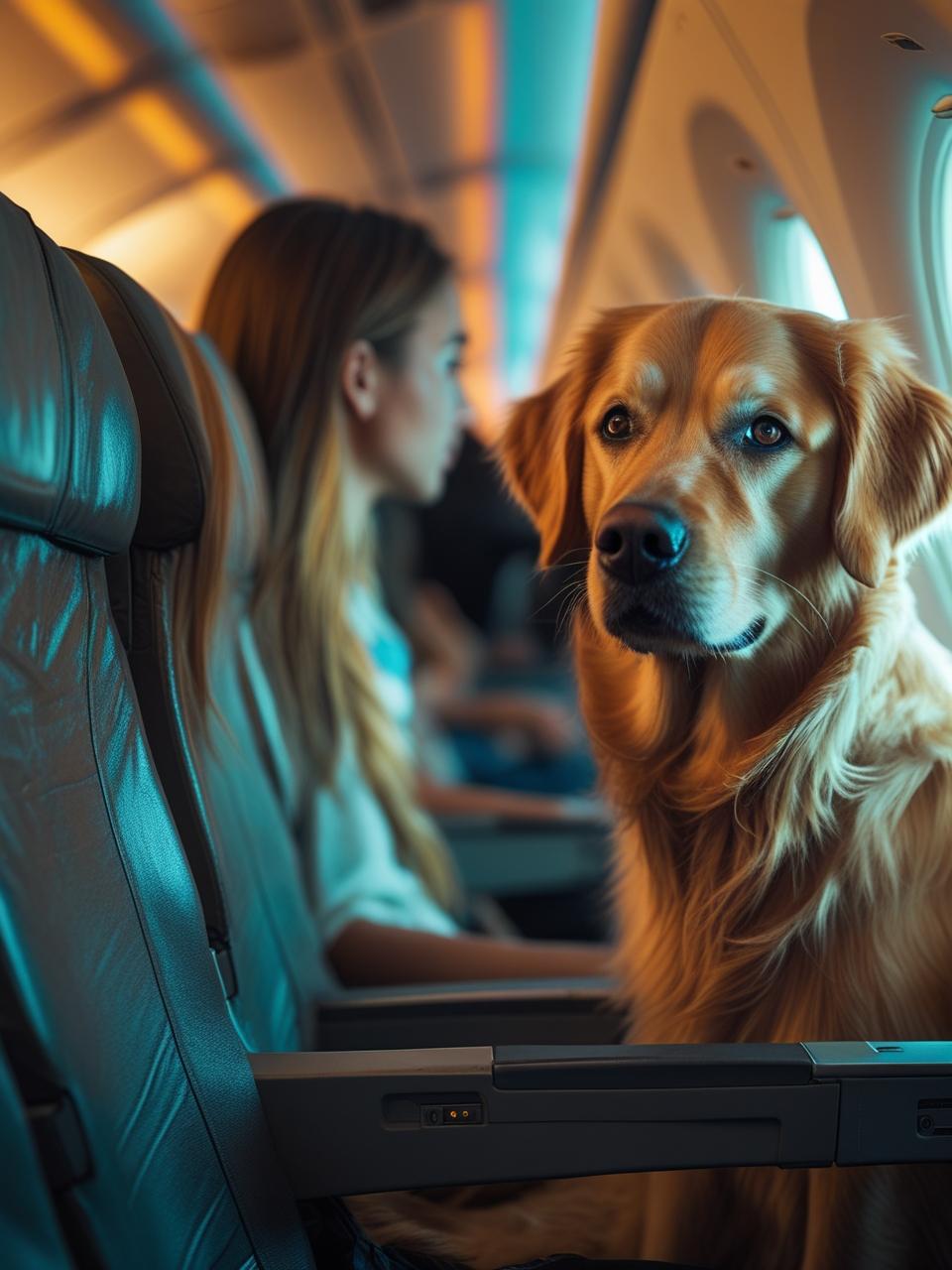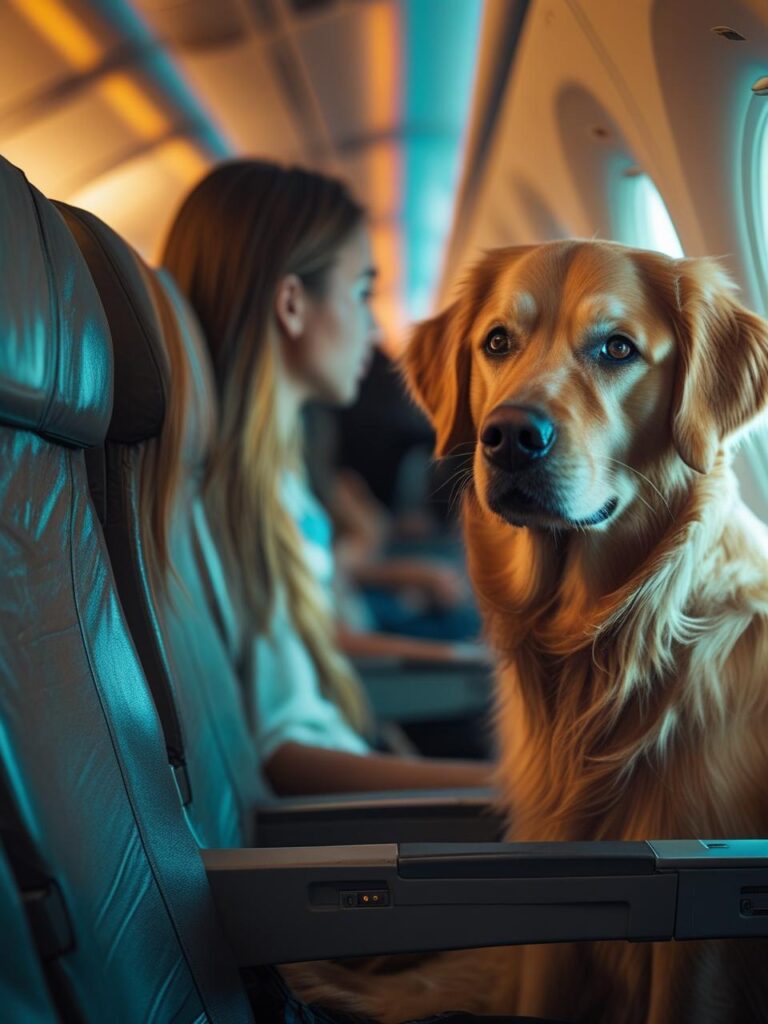The Dog on My Plane Kept Staring at Me—Until I Opened the Mysterious Envelope
I had the perfect setup: a window seat, noise-canceling headphones, and hopes for a decent nap if the turbulence didn’t ruin it. I hardly paid attention when a man took the seat across the aisle—until I noticed the German Shepherd crammed awkwardly at his feet, wearing a tight muzzle.
The dog’s gaze latched onto mine instantly.
It wasn’t threatening or anxious. Just… locked in. As if it knew something.
I quickly looked away. Probably a service dog. Maybe military. Not my concern. But every time I glanced over—without fail—those same eyes were waiting. Like it was expecting something from me.
Midway through the flight, the man shifted in his seat and something dropped to the floor. A plain brown envelope—sealed, unmarked. It slid partially under my carry-on. I reached out to return it, tapping his arm lightly.

No response.
He didn’t move. Didn’t blink.
I hesitated. Held the envelope in my hand. It felt oddly heavy for its size. No writing. No label. Except for a faint word written in pencil on the flap.
My name.
Not my first name. My full, legal name—the one barely anyone remembered. The one I’d stopped using after what happened in 2009.
I looked back at the dog. Still staring.
Despite the muzzle, it let out a soft, insistent whine. Almost… pleading.
That’s when I tore open the envelope. And what I found inside sent my stomach into freefall.
Sandwiched between two sheets of paper was a Polaroid. Worn and faded at the corners. In it, a younger me stood beside a woman I hadn’t seen in nearly ten years: Clara. My sister. She’d vanished during a solo hike in the Rockies—presumed dead after an exhaustive search turned up nothing. Her disappearance had devastated our family, leaving a gaping wound filled with silence and sorrow.
But there she was—smiling, relaxed, her arm slung around my shoulders. On the back of the photo, barely visible, was a date.
A date months after she’d disappeared.
My hands trembled. I turned the top page over. Typed neatly in the center was a message:
“Clara is alive. She needs your help. Trust the dog.”
Trust the dog? Was this some bizarre joke?
Heart pounding, I looked back at the German Shepherd. Its stare now felt… conscious. Intent. Almost human. Meanwhile, the man beside it remained motionless, his head tilted forward like he was asleep—or worse.
“Hey,” I whispered, leaning closer. “Are you alright?”
Nothing. I reached out, gently nudging his shoulder. His body shifted with the movement, limp against the seatbelt. Dread flooded me. I pressed two fingers against his neck.
No pulse.
He was dead.
Panic surged. Passengers nearby began to notice, whispering uneasily. Someone called for the flight crew. But before help could arrive, the dog let out another whine and nudged the envelope in my lap with its nose.
I stared at it, torn between confusion and fear. A prank? A trap? But the photo was real. The handwriting matched hers. And somewhere deep inside, beneath the years of grief, a flicker of hope sparked to life.
Once we landed, paramedics boarded the plane and confirmed the man had died—likely of natural causes. I was questioned briefly, but said little, clutching the envelope close. I needed to know the truth.
As we exited the plane, the dog didn’t leave my side. Its leash had somehow wrapped itself around my wrist. When I tried to remove it, the animal growled—quietly, not in anger, just enough to make me stop. It was trained. Calm. Focused. And for some reason, it was watching over me.
Outside the terminal, a black SUV pulled up. The window rolled down to reveal a woman with a serious but kind face.
“Get in,” she said. “We’re short on time.”
Despite everything in me screaming to run, I obeyed. The dog climbed into the backseat beside me like it belonged there. As we pulled away, the woman introduced herself as Detective Marisol Vega. She told me Clara had been working undercover—part of a secret mission to expose high-level corruption. When things turned deadly, she faked her death to protect herself—and others.
“Then why bring me in now?” I asked, still clutching the envelope like a lifeline.
“Because you’re the only family she has,” Vega said. “And because those responsible know she’s still alive. They’ll come after anyone she cares about—including you.”
Over the following days, Vega shared everything she could. Clara had left behind a trail of clues only I would recognize. The dog—whose name was Atlas—had been trained to help me follow them. That intense gaze wasn’t suspicion. It was loyalty. Trust. Everything I’d failed to show Clara back when she needed it.
The journey took us across state lines—to crumbling warehouses and hidden trails. Each step brought me closer to her—and forced me to face the guilt I’d buried since 2009. Back then, I’d shut her out. Convinced myself it was too late.
Eventually, we found a secluded cabin deep in the forest. Clara was there—thinner, older, but alive. We embraced tightly, tears falling freely. In that moment, everything broken inside me began to heal.
But peace was short-lived. Just as we prepared to leave, armed men closed in on the cabin. The betrayal cut deep when Vega revealed herself to be part of the conspiracy. But Clara had planned for this. She triggered a decoy signal that sent our attackers into confusion—long enough for us to escape. Atlas led the way.
Justice came swiftly. Clara’s evidence toppled major players in the corruption ring. The scars remained—but so did hope.
Weeks later, we sat on my porch—Clara, me, and Atlas resting at our feet. Life had tested us, but it hadn’t broken us. We’d learned hard lessons—about trust, about second chances, about the quiet strength of love.
So here’s what I’ll leave you with: Sometimes, the ones who seem to know more than they let on—whether human or not—are trying to lead you somewhere important. Don’t ignore them. Trust your gut. And whatever you do, never stop hoping.
If this story moved you, hit the like button and share it with someone who needs to believe in second chances. The world could always use more of that.

